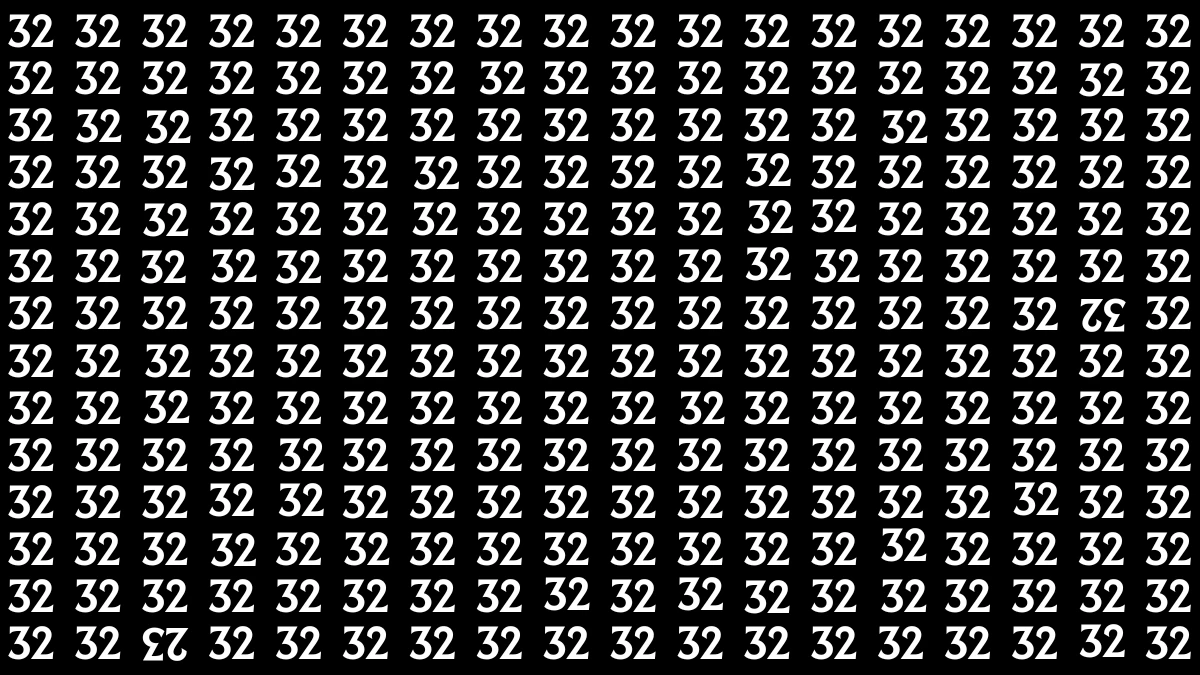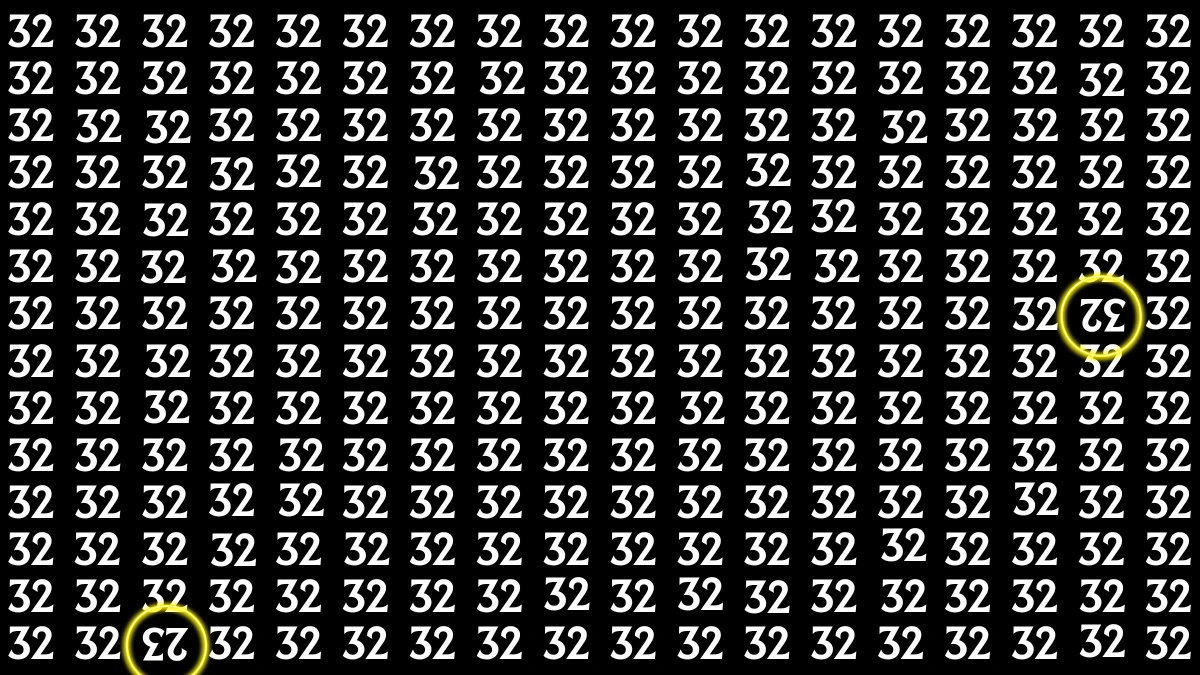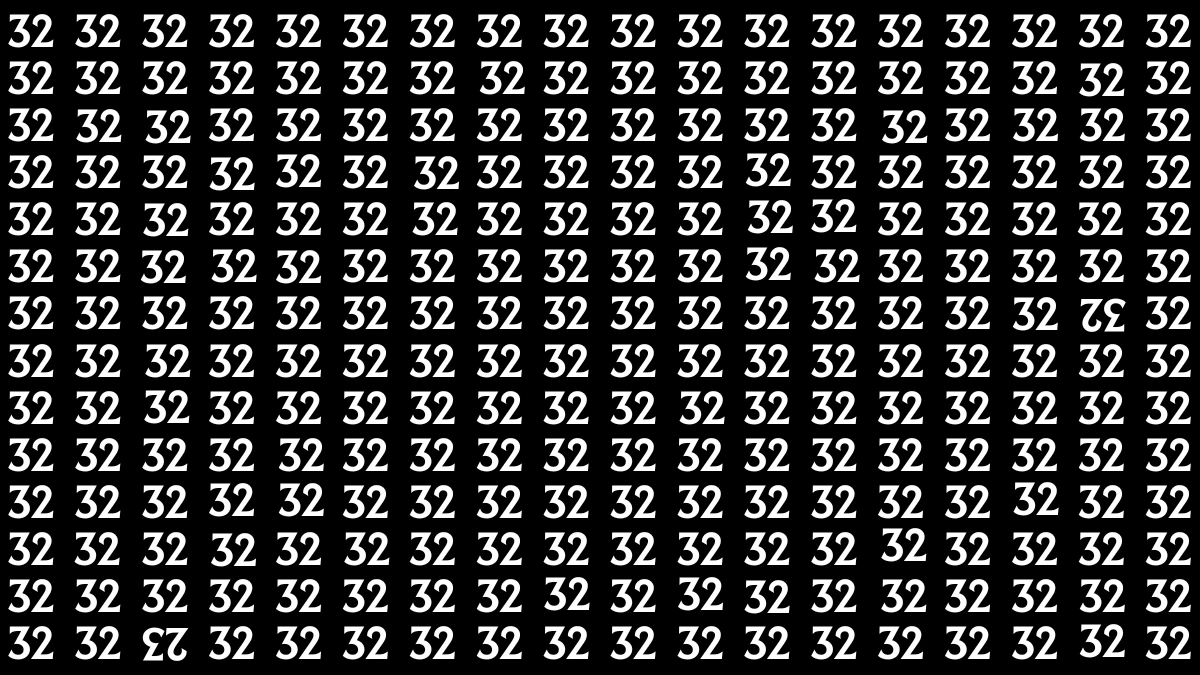Optical Illusion
An optical illusion is a visual phenomenon where the perception of an image or object is different from its reality. It occurs because of the way our brain processes the information it receives from our eyes. The brain interprets visual stimuli based on past experiences, context, and assumptions, which can sometimes lead to misperception.
Optical illusions exploit the way our eyes and brain interact with light, color, shape, and perspective, causing us to see something that isn’t actually there or perceive something differently than it is. For instance, illusions can make objects appear to move when they are still, cause straight lines to appear curved, or create images where two contrasting colors seem to "blend" when they are not physically adjacent.
These illusions reveal the complexity of our visual system and how our brain fills in gaps or makes educated guesses to interpret what we see.
Optical Illusion: Within 6 Seconds Spot The Inverted 32 and 23 among 32s
This optical illusion is a fun yet challenging test of your visual perception skills. At first glance, the image seems filled with identical "32s," but hidden within the sea of numbers are two inverted figures: a "32" and a "23."
The task is to spot these inverted numbers within just 6 seconds, putting your focus and reflexes to the test. Optical illusions like this one are designed to trick your brain into processing information differently, making it harder to identify subtle differences. Your brain tends to focus on patterns, so finding the two numbers that don’t fit in the sequence requires sharp attention to detail.
The more you practice spotting hidden elements in images, the quicker you become at processing visual cues. This optical illusion is a fun way to exercise your brain, improve concentration, and challenge your ability to spot minute differences quickly. Can you beat the clock?

Optical Illusion: Within 6 Seconds Spot The Inverted 32 and 23 among 32s - Solution
The inverted "32" and "23" in the image are positioned near the lower portion of the grid. The inverted "32" appears in the seventh row from the top, second column from the right and the number inverted "23" appears directly below it in the last row and third column.
They are surrounded by the regular "32" numbers, making them stand out as the anomaly. The pattern is otherwise consistent throughout the image, with each number displaying "32" in the same orientation, creating an almost hypnotic effect. The eye tends to focus on the regular numbers, making it difficult to immediately notice the inversion unless you scan carefully.
The inversion tricks the brain into missing these outliers due to the repetitive nature of the grid. To spot them, focus on the bottom rows, where the two numbers break the symmetry of the otherwise uniform "32s." These irregularities become visible only after a closer inspection.







